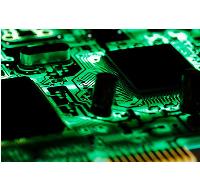 Add My Company
Add My Company
Sign In

So, what makes a ‘good’ electronics assembly then? Surely if it works then it’s alright, isn’t it? But what about longer term reliability? And what if it has to look, well… nice?
When it comes down to it, Printed Circuit Board Assemblies (PCBAs) are really rather complex; there’s the printed circuit board itself with its material and finishes, all of the components, and the solder holding both together. So, there’s a fair bit that can be good, or bad, or somewhere in that grey area in between.
The IPC-A-610 Acceptability of Electronic Assemblies is generally regarded as the standard that defines what is acceptable and what probably isn’t with regards to printed circuit board assembly. Whilst there are many IPC standards relating to electronics assemblies, this one is the most common. The purpose of this post is to examine the differences between the 3 classes IPC-A-610 uses to divide PCBA acceptability, so that you can determine which is right for your own products and then communicate your requirements to your Contract Electronics Manufacturer (CEM).
Let’s take a look at the basic principles of the IPC-A-610 classes:
Class 1
This is the most lenient when it comes to allowing potential defects. Think of the electronics assembly in a very cheap toy, for example. The PCBA will be hidden well away within some stuffing or plastic enclosure and, as a result, the quality of solder joints or component positions won’t be a priority. It won’t be expected to last very long and often, has to be assembled to a specific price – usually translating to "as cheap as possible", whilst ensuring it still functions as expected.
Class 2
This is really the "middle of the road"; the standard that most Original Equipment Manufacturers (OEMs) request, although that’s not necessarily the right decision. This is typically requested for non-critical electronic assemblies where longer term reliability is desirable, rather than essential. Class 2 does allow for a certain degree of imperfection, for example, surface mount components placed slightly ‘off pad’; this is usually fine electrically and mechanically, but aesthetically can look wrong.
Class 3
This is the highest standard, all neat and tidy and shiny, and aimed at more critical PCB assemblies. However, it does come at a premium. Arguably, a good CEM provider will always try to manufacture the products they build to Class 3 anyway, so the cost difference you should pay is usually down to the extra inspection required – plus any minor rework – to ensure it complies with the standard. In some cases, it may be necessary to slow surface mount machines down a bit to achieve the required placement accuracy (hence a longer build time/additional cost), or else make allowance for higher degrees of scrap - where materials can’t be reworked - or for additional cleaning, for example.
Any Electronics Manufacturing Services (EMS) provider serious about compliance with IPC standards will have implemented widespread internal training programmes to promote awareness within their production facility. Ideally, this will not just be for those inspecting the end products, but also for those building them, so processes can be correctly monitored. The best way to achieve this, and to maintain the standards required, is often to have in-house IPC trainers who themselves will be externally re-certified.
Some OEMs will actually produce their own criteria, as well as or instead of, the IPC standards, which helps guarantee that any products delivered to them meet their own requirements. In most cases, the IPC-A-610 standard will suffice, but if you do choose to undertake this additional work and create your own set of guidelines, make sure that the EMS company that you are working with is made clear of these from the outset. For instance, ensure that you reference your new criteria on each Request for Quote (RFQ) or purchase order you send across to your partner.
So, why does all this matter to you? Well, a common source of contention between an OEM and their EMS provider is the OEM getting what they asked for, but not really what they wanted!
It’s important, therefore, that you are clear on the basic principles that separate the three classes of the standard so that - with help from your EMS partner – you specify the correct class for your PCB assembly and have an understanding of what the results are likely to be.
For more information on IPC Standards for Acceptability & why they matter to your PCB assembly talk to ESCATEC Mechatronics Ltd
Enquire Now
More Blogs
List your company on FindTheNeedle.

